Apicoectomy
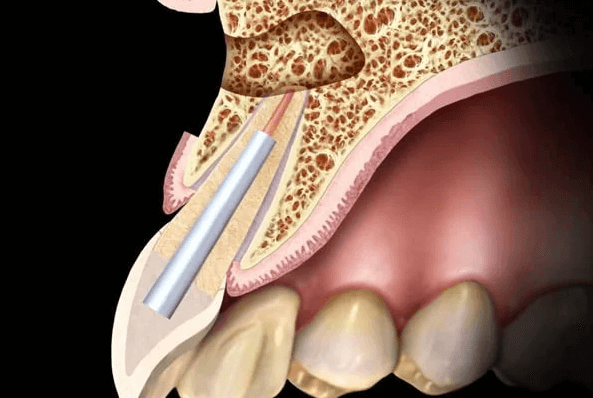
What Is Apicoectomy?
Apicoectomy, also known as root-end resection, is a surgical dental procedure aimed at treating infections or inflammation in the roots of a tooth. It is typically performed when a standard root canal treatment is unsuccessful in resolving the issue. During an apicoectomy, the tip of the tooth’s root, called the apex, along with any infected tissue, is removed. This procedure is commonly recommended to save a tooth from extraction and alleviate discomfort caused by persistent dental problems.
Before deciding on whether Apicoectomy are right for you, there are some things you should know:
- Who Needs Apicoectomy?
- What Are The Indications For Apicoectomy?
- What Are The Contraindications For Apicoectomy?
- What Are The Advantages Of Apicoectomy?
- What Are The Potential Risks Or Complications Of Apicoectomy?
- What Are The Alternative Treatments If I Do Not Choose Apicoectomy?
- What Are The Costs Of Apicoectomy?
- What Are The Steps In The Apicoectomy Procedure?
- How Long Does Apicoectomy Last?
If you have any further questions about Apicoectomy or other dental services offered at Atlas Dental, please contact us.

Free phone consultation
Have questions about Apicoectomy? Schedule a free phone consultation with our Toronto dentist.

5 star google reviews
See for yourself why more and more people are choosing our dental office for Apicoectomy treatment.

Emergency dental care
Have a previously root canal treated tooth and think you need Apicoectomy treatment? Book online for an exam.
Who Needs Apicoectomy?
Apicoectomy is typically recommended for individuals who have persistent infections or inflammation in the roots of their teeth, particularly after undergoing a root canal treatment. Here are some situations where a dentist or endodontist might suggest an apicoectomy:
- Persistent Infections: Despite a root canal procedure, if an infection continues to affect the tooth’s root, an apicoectomy may be necessary to remove any remaining infected tissue.
- Recurrent Symptoms: Patients experiencing recurring symptoms such as pain, swelling, or abscesses around a previously treated tooth may benefit from an apicoectomy to address underlying issues.
- Complex Root Anatomy: In some cases, the anatomy of the tooth’s roots may pose challenges during a standard root canal treatment, making an apicoectomy the preferred option for effectively treating the infection.
- Inaccessibility: Teeth located in areas difficult to access through traditional root canal methods may require an apicoectomy to thoroughly clean and treat the affected root tip.
- Preserving Natural Teeth: Apicoectomy is often recommended as an alternative to tooth extraction, allowing patients to maintain their natural teeth and avoid the need for replacement with prosthetics such as dental implants or bridges.
Understanding who may benefit from an apicoectomy helps individuals make informed decisions about their dental care and ensures appropriate treatment for persistent dental issues. If you have further questions about Apicoectomy, please contact us.
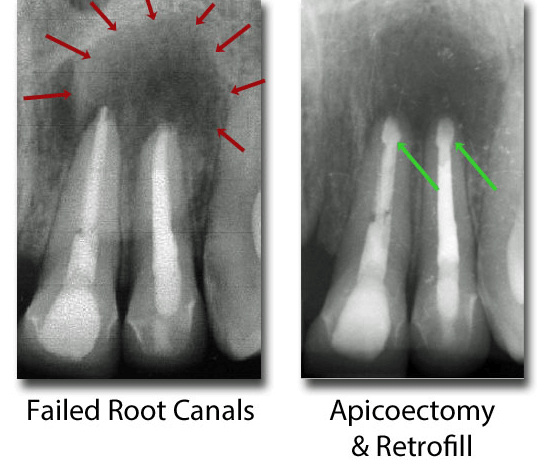
What Are The Indications For Apicoectomy?
Apicoectomy is a specialized dental procedure recommended in specific situations where conventional root canal therapy may not effectively resolve underlying issues. Understanding the indications for apicoectomy can help patients and dental professionals identify when this surgical intervention is necessary. Here are some common indications for undergoing an apicoectomy:
- Persistent Infection: When a tooth’s root canal system remains infected or develops recurrent infections despite previous root canal treatment, an apicoectomy may be indicated to remove any infected tissue and prevent further spread of the infection.
- Presence of Apical Lesions: Radiographic imaging may reveal the presence of apical lesions or cysts at the tip of a tooth’s root, indicating the need for surgical intervention such as an apicoectomy to remove the diseased tissue and promote healing.
- Anatomical Challenges: Teeth with complex root canal anatomy or unusual configurations that pose challenges for complete cleaning and sealing during standard root canal treatment may benefit from an apicoectomy to ensure thorough removal of infected tissue and prevent reinfection.
- Preservation of Natural Teeth: Apicoectomy is often recommended as a conservative treatment option to preserve natural teeth and avoid the need for extraction, particularly in cases where the tooth can still function effectively after surgical intervention.
By recognizing these indications for apicoectomy, dental professionals can accurately assess the appropriateness of the procedure for individual patients, ensuring optimal outcomes and long-term dental health. If you have further questions about Apicoectomy, please contact us.
What Are The Contraindications For Apicoectomy?
While apicoectomy is a valuable treatment option for many dental conditions, there are certain situations where the procedure may not be advisable or may carry increased risks. Understanding the contraindications for apicoectomy is essential for ensuring patient safety and determining the most appropriate course of treatment. Here are some common contraindications to consider:
- Poor General Health: Patients with significant medical conditions such as uncontrolled diabetes, compromised immune function, or cardiovascular issues may not be suitable candidates for apicoectomy due to increased surgical risks and potential complications.
- Unfavorable Tooth Anatomy: Teeth with extremely curved or inaccessible roots may pose challenges during apicoectomy, potentially leading to incomplete removal of infected tissue or damage to surrounding structures. In such cases, alternative treatments may be considered.
- Advanced Periodontal Disease: Patients with advanced periodontal (gum) disease affecting the tooth undergoing apicoectomy may not achieve optimal outcomes, as the underlying gum disease can compromise the tooth’s support structure and hinder proper healing after surgery.
- Presence of Systemic Infections: Active systemic infections, such as acute respiratory infections or bloodborne illnesses, may increase the risk of complications during and after apicoectomy. It is essential to address these infections before considering surgical intervention.
- Patient Preference or Compliance: Patients who are unwilling or unable to comply with postoperative care instructions, including follow-up appointments and oral hygiene practices, may not be suitable candidates for apicoectomy, as adherence to treatment protocols is crucial for successful outcomes.
- Unresolved Pathology: In cases where the underlying cause of persistent symptoms or pathology is unclear or has not been adequately diagnosed, proceeding with apicoectomy without addressing the root cause may lead to treatment failure or recurrence of the issue.
By identifying these contraindications, dental professionals can make informed decisions regarding the suitability of apicoectomy for individual patients, ensuring optimal treatment outcomes and patient satisfaction. If you have further questions about Apicoectomy, please contact us.
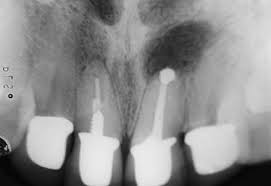
What Are The Advantages Of Apicoectomy?
Apicoectomy offers several advantages as a treatment option for specific dental conditions, particularly when conventional root canal therapy is insufficient or ineffective. Understanding these advantages can help patients and dental professionals make informed decisions about the most appropriate course of treatment. Here are some key benefits of apicoectomy:
- Preservation of Natural Teeth: One of the primary advantages of apicoectomy is its ability to preserve natural teeth by removing infected tissue from the root tip while retaining the tooth’s structure. This helps maintain oral function and aesthetics without the need for extraction and replacement with prosthetic devices.
- Effective Resolution of Persistent Infections: Apicoectomy allows for the thorough removal of infected tissue and any associated cysts or lesions at the apex of the tooth’s root, leading to more effective resolution of persistent infections compared to conventional root canal therapy alone.
- Prevention of Tooth Loss: By addressing underlying issues such as persistent infections or inflammation, apicoectomy helps prevent the need for tooth extraction, preserving the natural dentition and avoiding the potential complications associated with tooth loss, such as changes in bite alignment and bone resorption.
- Improved Long-Term Success Rates: Studies have shown that apicoectomy can result in favorable long-term success rates, particularly in cases where conventional root canal therapy has failed or is not feasible due to anatomical challenges or other factors. This can provide patients with lasting relief from symptoms and improved oral health outcomes.
- Minimally Invasive Procedure: Compared to tooth extraction and replacement with dental implants or bridges, apicoectomy is a relatively minimally invasive procedure that typically involves less discomfort, shorter recovery times, and preservation of surrounding healthy tooth structure.
- Enhanced Patient Comfort: With advancements in dental technology and techniques, apicoectomy procedures are now performed with greater precision and minimal trauma to surrounding tissues, resulting in enhanced patient comfort during and after the surgery.
Understanding the advantages of apicoectomy can empower patients to make informed decisions about their dental care and facilitate collaborative discussions with their dental professionals regarding treatment options and expectations. If you have further questions about Apicoectomy, please contact us.
What Are The Potential Risks Or Complications Of Apicoectomy?
While apicoectomy is generally considered a safe and effective procedure for treating certain dental conditions, it is essential to recognize that, like any surgical intervention, there are potential risks and complications associated with it. Patients should be informed about these risks to make educated decisions about their treatment. Here are some potential risks and complications of apicoectomy:
- Recurrence of Infection: Despite successful removal of infected tissue during apicoectomy, there is a risk of recurrence of infection in some cases, particularly if underlying factors contributing to the infection are not adequately addressed. Proper postoperative care, including antibiotic therapy as prescribed by the dentist, can help minimize this risk.
- Prolonged Pain or Discomfort: Some patients may experience prolonged pain or discomfort following apicoectomy, especially if the surgical site fails to heal properly or if there are complications such as nerve damage or persistent inflammation.
- Swelling and Bruising: Swelling and bruising around the surgical site are common after apicoectomy and typically resolve within a few days to a week. However, in some cases, excessive swelling or bruising may occur, requiring medical attention.
- Damage to Surrounding Structures: During apicoectomy, there is a risk of inadvertently damaging surrounding structures such as adjacent teeth, nerves, or blood vessels. Careful surgical technique and thorough preoperative planning help minimize this risk.
- Sinus Complications: Apicoectomy involving upper teeth, particularly those in the posterior region, carries a risk of sinus complications such as sinusitis or oroantral fistula formation if the sinus membrane is perforated during the procedure.
- Nerve Damage: Manipulation of tissues near nerves during apicoectomy can result in temporary or permanent nerve damage, leading to altered sensation, numbness, or tingling in the affected area.
Patients considering apicoectomy should discuss these potential risks and complications with their dentist or endodontist to ensure they have a thorough understanding of the procedure and its associated outcomes. If you have further questions about Apicoectomy, please contact us.
What Are The Alternative Treatments If I Do Not Choose Apicoectomy?
If you decide that apicoectomy is not the preferred treatment option for your dental condition, several alternative treatments may be considered based on your specific circumstances and the advice of your dentist or endodontist. Here are some common alternative treatments to apicoectomy:
- Root Canal Retreatment: If the primary root canal treatment has failed to resolve the issue or if new infection occurs, root canal retreatment may be recommended. During this procedure, the dentist or endodontist removes the filling material from the previous root canal treatment, cleans the root canal system again, and seals it with new filling material.
- Extraction and Replacement: In cases where the tooth cannot be saved or when the risks associated with apicoectomy outweigh the potential benefits, extraction of the affected tooth followed by replacement with a dental implant, dental bridge, or removable prosthesis may be considered to restore oral function and aesthetics.
Ultimately, the choice of treatment depends on various factors, including the severity of the dental condition, your overall health, treatment preferences, and long-term goals for oral health and function. Discussing these alternatives with your dental provider will help determine the most suitable course of action for your individual needs. If you have further questions about Apicoectomy, please contact us.
Cost of Apicoectomy
Apicoectomy is a surgical dental procedure to save failed root canal treated teeth by sectioning off and back-filling the tips of the roots. The charge per tooth depends on the number of canals being retrofilled. Therefore, the cost of apicoectomy treatment can range from $1722 to 2169. The codes relevant to apicoectomy treatment in the Ontario Dental Association’s Suggested Fee Guide appear as follows::
Apicoectomy/Apical Curettage + Retrofilling + Guided Tissue Regeneration With Resorbable Membrane, Per Site + Material Expense
- One canal – 34111 + 34211 + 42702 + 99555: 1700-2491: $1722
- Two canals – 34122 + 34222 + 42702 + 99555: $1913
- Three canals – 34133 + 34233 + 42702 + 99555: $2041
- Four canals – 34134 + 34234 + 42702 + 99555: $2169
Apicoectomy therapy is sometimes considered a supplementary service by dental insurance plans and may or may not be covered by your dental insurance. Be sure to find out from your dental insurance plan provider how much you are eligible for before going ahead with dental treatment. Our fees are consistent with the ODA Fee Guide.
For patients without dental insurance, Atlas Dental is pleased to offer dental financing through Dentalcard. Affordable payment plans start at 7.95% for terms of 6 months to 6 years. To learn more about Dentalcard dental treatment financing, follow this link.
What Are The Steps In The Apicoectomy Procedure?
Apicoectomy, also known as root-end resection, is a surgical dental procedure performed by a dentist or endodontist to treat infections or inflammation in the roots of a tooth. The procedure involves several sequential steps to effectively remove diseased tissue and promote healing. Here is an overview of the typical steps involved in an apicoectomy procedure:
- Preparation and Anesthesia: Before the start of the procedure, the dental professional will review your medical history and discuss the treatment plan with you. Local anesthesia is administered to numb the surgical area and ensure your comfort throughout the procedure.
- Access and Exposure: The dentist or endodontist creates a small incision in the gum tissue near the affected tooth to access the underlying bone and root structure. In some cases, a small flap of gum tissue may be gently lifted to provide better visibility and access to the surgical site.
- Apical Resection: Once the apex of the root is identified, the dentist removes a small portion of the root tip, including any infected or diseased tissue, using precision instruments such as dental burs or ultrasonic tips. This step is crucial for eliminating the source of infection and promoting proper healing.
- Root-End Preparation: After resecting the root tip, the dentist prepares the root-end cavity by shaping it into a smooth and concave surface to facilitate effective sealing and prevent future bacterial ingress. This may involve using dental drills or ultrasonic instruments to create a clean and stable surface.
- Root-End Filling: Once the root-end cavity is prepared, the dentist fills it with a biocompatible material such as mineral trioxide aggregate (MTA) or dental composite resin. This filling material seals the root canal system, preventing bacteria from re-entering and promoting tissue healing and regeneration.
- Suture Placement: After completing the root-end filling, the dentist carefully repositions the gum tissue and sutures it in place to promote proper wound healing and prevent postoperative complications such as infection or gum recession. The sutures are typically removed after a week or as instructed by the dental professional.
- Postoperative Care Instructions: Before leaving the dental office, you will receive detailed instructions on postoperative care, including recommendations for managing discomfort, maintaining oral hygiene, and scheduling follow-up appointments for monitoring healing progress.
By following these sequential steps with precision and care, dental professionals can effectively perform apicoectomy procedures to treat infections or inflammation in the roots of teeth and help patients achieve improved oral health and comfort. If you have further questions about Apicoectomy, please contact us.
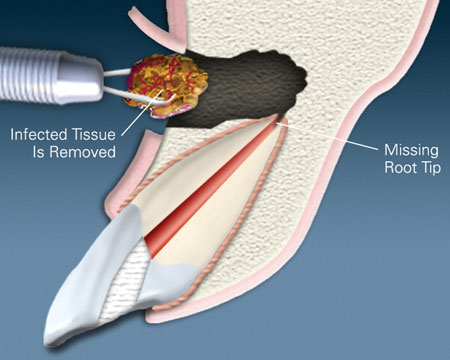
How Long Does Apicoectomy Last?
The longevity of an apicoectomy procedure can vary depending on several factors, including the specific circumstances of the dental condition being treated, the quality of the procedure performed, and the patient’s oral hygiene habits and overall health. While apicoectomy is intended to provide a permanent solution to persistent dental issues, it is essential to understand that success rates may vary, and occasional follow-up care may be necessary. Here are some factors to consider regarding the duration of apicoectomy:
- Oral Hygiene Practices: Maintaining good oral hygiene habits, including regular brushing, flossing, and routine dental check-ups, is essential for the long-term success of apicoectomy. Proper oral hygiene helps prevent the recurrence of infections and promotes overall oral health, prolonging the effectiveness of the procedure.
- Underlying Health Conditions: The presence of underlying systemic conditions such as diabetes or immune disorders may affect the body’s ability to heal properly after apicoectomy. Patients with such conditions may require additional monitoring and supportive care to ensure optimal outcomes.
- Follow-Up Care: Following apicoectomy, patients are typically advised to schedule follow-up appointments with their dental professional to monitor healing progress and ensure that the surgical site is healing properly. These follow-up visits allow the dentist to assess the effectiveness of the procedure and address any concerns or complications that may arise.
Overall, with proper care and monitoring, apicoectomy can provide long-lasting relief from persistent dental problems and help preserve natural teeth. Patients should work closely with their dental professionals to ensure optimal outcomes and maintain oral health in the years following the procedure. If you have further questions about Apicoectomy, please contact us.
We also think you’ll like…
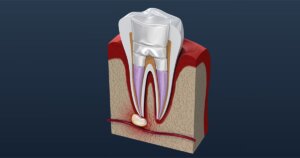
Root Canal Treatment Pre-Operative Instructions
Root Canal Treatment Pre-Operative Instructions What You Should Do To Prepare For Root Canal Treatment Root canal treatment is a common dental procedure to save
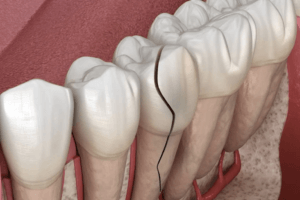
Crack Tooth Syndrome
Crack Tooth Syndrome What Is Crack Tooth Syndrome? Are you experiencing dental pain but your dentist has told you there is no obvious sign of

Cracked Tooth
Cracked Tooth What Is A Cracked Tooth? A Cracked Tooth is a common dental problem that can happen to anyone at any age. It occurs
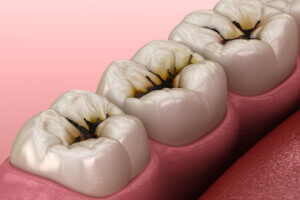
Irreversible Pulpitis
Irreversible Pulpitis What Is Irreversible Pulpitis? If you’ve ever experienced a sudden, sharp, and persistent toothache, you may be experiencing “Irreversible Pulpitis.” This dental condition,

Root Canal Treatment Post-Operative Instructions
Root Canal Treatment Post-Operative Instructions What You Should Do After Root Canal Treatment For A Successful Recovery Root canal treatment is a common dental procedure
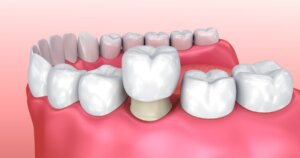
Dental Crown Recementation
Dental Crown Recementation What Is Dental Crown Recementation? Dental Crowns, often referred to as “caps,” play a crucial role in restoring both the appearance and

